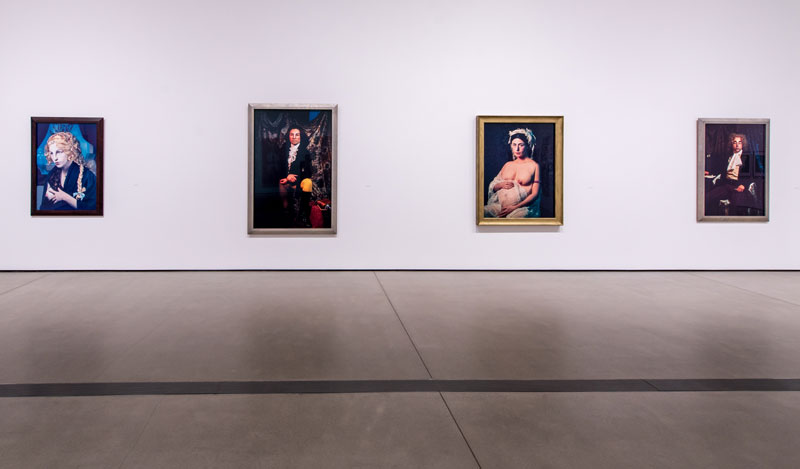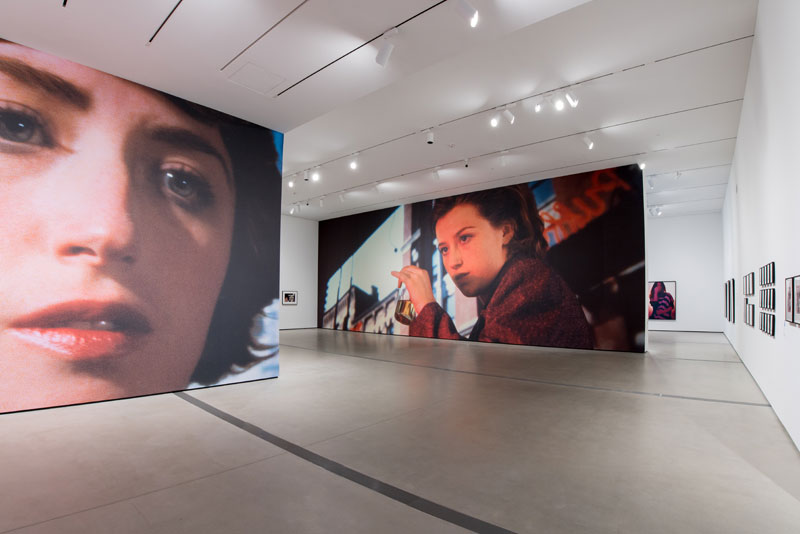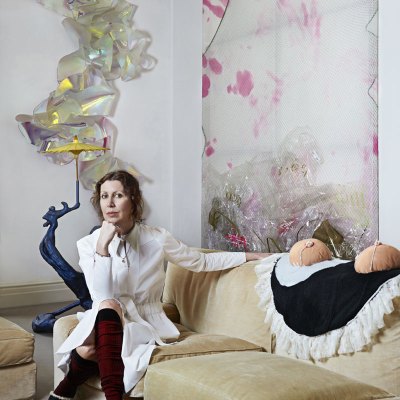There are not many exhibitions where it feels entirely appropriate to be confronted by a 20-foot-high photograph of the artist’s face. In the case of a Cindy Sherman retrospective however, this makes a lot of sense. One of contemporary art’s more familiar figures, Sherman is collected by institutions and patrons the world over. She is renowned for the chameleon-like adoption of personae in her photographs; transforming her appearance through the use of costumes, wigs, make-up and backdrops, her work has remained remarkably consistent throughout her 40-year career.
The exhibition, ‘Imitation of Life’, is presented at the The Broad in Los Angeles. It begins with a new work showing the artist dressed in flapper-style garb, resembling a contemporary incarnation of Greta Garbo and placed amid dramatic wallpaper, which blows up Sherman’s classic 1980s photographs to a monumental scale. The curator Philipp Kaiser, formerly senior curator of LA’s Museum of Contemporary Art, has opted for a roughly chronological hang, introducing Sherman’s work to audiences one series at a time.
Untitled Film Still #47 (1979), Cindy Sherman. © Cindy Sherman; courtesy the artist and Metro Pictures

Sherman began making work in the late 1970s and some of the earliest works in the show retain the punchy energy of their creation. Sherman’s Untitled Films Stills is a series of black-and-white photographs showing the artist impersonating the prairie girls, femme fatales, and housewives of the 1950s movie industry. Posing awkwardly with obvious hairpieces and clothing slightly askew, Sherman’s starlets are not quite the real thing. This very awkwardness is crucial to the work’s meaning, exposing the constructed nature of the roles which we all play – and are expected to play – and presenting them in a critical light.
Sherman has been acclaimed for taking apart the myriad ways in which we construct our identities; for exposing the image-driven culture of today mediated by so many devices. Indeed she clearly has a knack for identifying the details that characterise certain classes and should be applauded for her skills of observation.
‘Cindy Sherman: Imitation of Life’ at The Broad, Los Angeles, 2016. Photo: Ben Gibbs

However, given Sherman’s prolific exhibition history, it leaves one to wonder what is left to learn about such a famous and widely-exhibited artist. Not all that much, as it turns out. The remaining works in the exhibition follow much the same pattern as the early images. The artist continues to dress in different costumes, striking a variety of poses against multiple backgrounds. Some works are printed small format, others are large-scale; some are framed simply, others more ornately – such as the 1990s ‘historical’ works, which ape the conventions of Renaissance and Georgian portraiture and are presented in gilt frames. Adopting and subverting the visual language of cinema, TV, and advertising, Sherman explores how men (sometimes) and women (more usually) are relentlessly analysed and judged on their physical and material attributes.
It’s not that the exhibition isn’t good. It’s exquisitely presented, well-researched, and there are multiple works from every era of Sherman’s practice. Rather, after experiencing several series in which the work offers up the same insights every time, the photographs themselves begin to feel simplistic; yes, women strive to embody impossible standards of beauty; yes, we all adapt our clothing and hairstyles to signify different aspects of our identity. But what else? The final room – in which the visitor learned that the artist has returned to the cinematic tropes of her early work – is a testament to this lack of development.
Untitled #70 (1980), Cindy Sherman.

Sherman’s early works were undoubtedly important during an era in which identity politics played such a crucial role in contemporary art and it’s true that the Pictures Generation’s critique of media laid the ground for so many of today’s artists. Without Sherman we would not have the convention-defying work of artists such as Wu Tsang or Ryan Trecartin, for instance. Nonetheless, the exhibition left this viewer wondering if Sherman has anything left to say that hasn’t already been said.
‘Cindy Sherman: Imitation of Life’ is at The Broad until 2 October.



